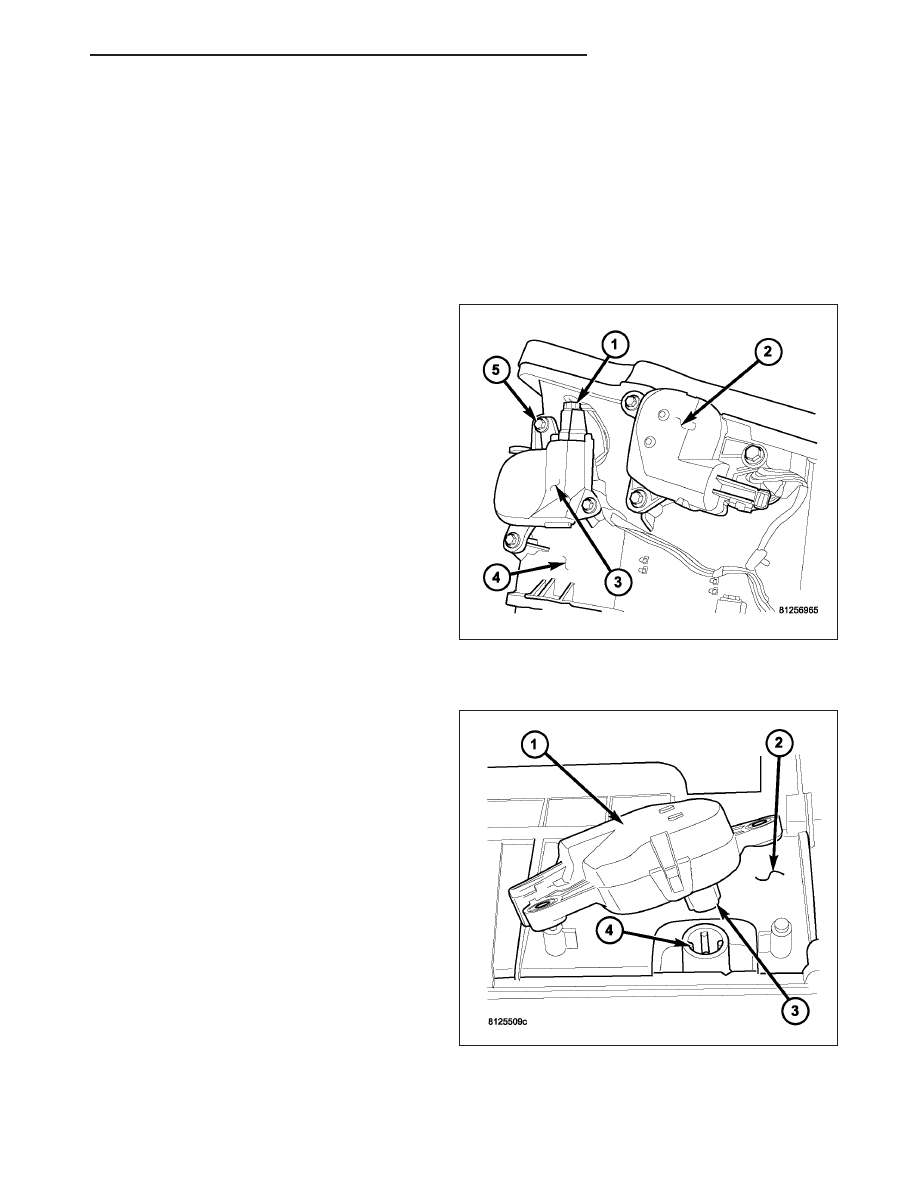Content .. 1534 1535 1536 1537 ..
Dodge Durango (HB). Manual - part 1536

The mode door actuators are diagnosed using a scan tool. Refer to 24 - HVAC Electrical Diagnostics for more
information.
REMOVAL
WARNING: On vehicles equipped with airbags, disable the airbag system before attempting any steering
wheel, steering column, or instrument panel component diagnosis or service. Disconnect and isolate the
battery negative (ground) cable, then wait two minutes for the airbag system capacitor to discharge before
performing further diagnosis or service. This is the only sure way to disable the airbag system. Failure to
take the proper precautions could result in accidental airbag deployment and possible personal injury or
death.
1. Disconnect and isolate the negative battery cable.
2. Remove the screws (5) that secure the panel door
actuator (2) and the floor/defrost door actuator (3)
located on the driver side end of the HVAC housing
(4) as required.
3. Disconnect the HVAC wire harness connector (1)
from the panel door actuator and the floor/defrost
door actuator as required.
4. Remove the mode door actuator(s) from the HVAC
housing.
INSTALLATION
1. Position the mode door actuator(s) (1) onto the
driver side end of the HVAC housing as required. If
necessary, rotate the actuator slightly to align the
splines on the actuator output shaft with those in
the mode-air door linkage.
HB
CONTROLS - FRONT
24 - 337